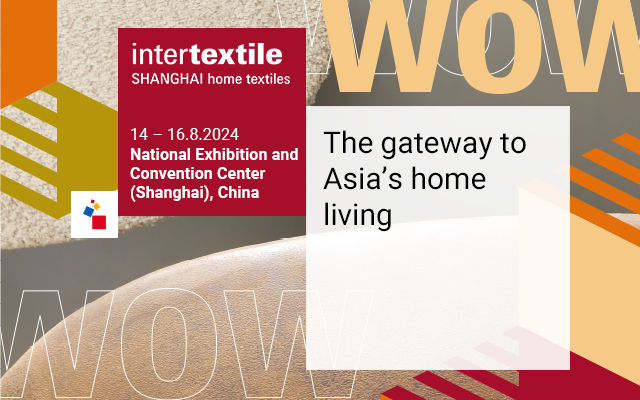Interviews
UD researchers continue nanotechnology collaboration with Koreans
14 Feb '11
3 min read
University of Delaware researchers Tsu-Wei Chou and Erik Thostenson continue to advance understanding of hybrid micro- and nano-composites as part of a collaborative research partnership between UD's Center for Composite Materials (UD-CCM) and the Korean Institute of Materials (KIMS) on nanotechnology.
First initiated in 2007, the nine-year research grant totaling $5 million is funded under the Global Research Laboratory (GRL) program of the National Research Foundation of Korea (NRF). The GRL program, established by the Korean Ministry of Education, Science and Technology (MEST), is now in its second three-year phase.
Chou, Pierre S. du Pont Chair of Engineering in UD's Department of Mechanical Engineering, is the foreign principal investigator for the grant. Thostenson, assistant professor of mechanical engineering, serves as UD co-principal investigator.
In the past three years, 35 international research teams have been established under the GRL program with major focus in the areas of nanotechnology, biotechnology, information technology and environmental sciences, according to Joon-Hyung Byun, Korean principal investigator at KIMS. Byun is a UD alumnus who completed his doctorate in mechanical engineering in 1992 under Chou's supervision.
The UD-KIMS team is one of the teams awarded GRL funding in the nanotechnology area. UD-CCM and KIMS investigators have focused on developing advanced fiber composites capable of sensing the initiation and growth of microscopic damages, such as minute matrix cracking and delamination, using carbon nanotubes.
This method of electric resistance-based damage sensing affords a unique opportunity to also sense the effectiveness of autonomous repair, also known as self-healing, in fiber composites, says Chou.
During the second phase of the GRL program, the UD-KIMS team will explore these sensing capabilities with particular focus on three-dimensional textile composites.
Chou and his peer Korean and foreign principal investigators will present their research findings to MEST and NRF officials and the Korean academic community at a Feb. 22 symposium in Seoul.
“Tsu-Wei's work on the use of carbon nanotubes as an integrated sensing system for composites exemplifies the potential for embedded multi-functionality offered by advanced materials,” says Jack Gillespie, CCM director and Donald C. Phillips Professor of Civil and Environmental Engineering. “The research is establishing the foundation for structural health monitoring for composites in a wide range of applications.”
“This work may ultimately change the way we view and use materials, in that a structure may provide advanced warning that it is about to fail, and may even be able to heal itself,” adds Anette Karlsson, chair of the Department of Mechanical Engineering. “Such advance concepts can only be accomplished by collaborating with first class researchers and the UD-KIMS collaboration is an important part of Dr. Chou's efforts.”
First initiated in 2007, the nine-year research grant totaling $5 million is funded under the Global Research Laboratory (GRL) program of the National Research Foundation of Korea (NRF). The GRL program, established by the Korean Ministry of Education, Science and Technology (MEST), is now in its second three-year phase.
Chou, Pierre S. du Pont Chair of Engineering in UD's Department of Mechanical Engineering, is the foreign principal investigator for the grant. Thostenson, assistant professor of mechanical engineering, serves as UD co-principal investigator.
In the past three years, 35 international research teams have been established under the GRL program with major focus in the areas of nanotechnology, biotechnology, information technology and environmental sciences, according to Joon-Hyung Byun, Korean principal investigator at KIMS. Byun is a UD alumnus who completed his doctorate in mechanical engineering in 1992 under Chou's supervision.
The UD-KIMS team is one of the teams awarded GRL funding in the nanotechnology area. UD-CCM and KIMS investigators have focused on developing advanced fiber composites capable of sensing the initiation and growth of microscopic damages, such as minute matrix cracking and delamination, using carbon nanotubes.
This method of electric resistance-based damage sensing affords a unique opportunity to also sense the effectiveness of autonomous repair, also known as self-healing, in fiber composites, says Chou.
During the second phase of the GRL program, the UD-KIMS team will explore these sensing capabilities with particular focus on three-dimensional textile composites.
Chou and his peer Korean and foreign principal investigators will present their research findings to MEST and NRF officials and the Korean academic community at a Feb. 22 symposium in Seoul.
“Tsu-Wei's work on the use of carbon nanotubes as an integrated sensing system for composites exemplifies the potential for embedded multi-functionality offered by advanced materials,” says Jack Gillespie, CCM director and Donald C. Phillips Professor of Civil and Environmental Engineering. “The research is establishing the foundation for structural health monitoring for composites in a wide range of applications.”
“This work may ultimately change the way we view and use materials, in that a structure may provide advanced warning that it is about to fail, and may even be able to heal itself,” adds Anette Karlsson, chair of the Department of Mechanical Engineering. “Such advance concepts can only be accomplished by collaborating with first class researchers and the UD-KIMS collaboration is an important part of Dr. Chou's efforts.”
University of Delaware
Popular News
Leave your Comments
Editor’s Pick
































-Ltd..jpg?tr=w-120,h-60,c-at_max,cm-pad_resize,bg-ffffff)





.jpg?tr=w-120,h-60,c-at_max,cm-pad_resize,bg-ffffff)
.jpg?tr=w-120,h-60,c-at_max,cm-pad_resize,bg-ffffff)






